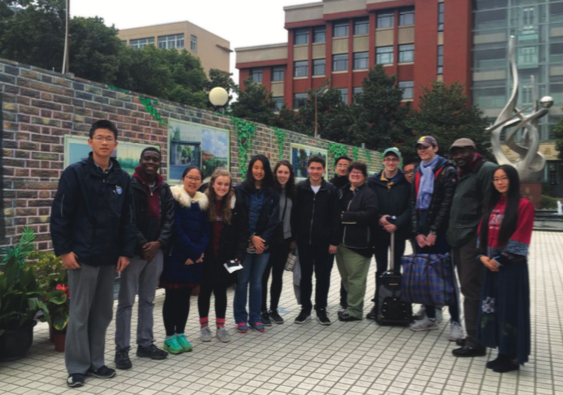Over spring break, I traveled with five other Choate students to Shanghai, China for the annual High School Affiliated to Fudan University Exchange Program. In the city, I immersed myself in the Chinese culture by spending multiple days at the high school affiliated to Choate. Spending time at a school modeled after an American boarding school, I anticipated an experience similar to my own. However, my mind would soon change.
Upon arriving at the school, the first differences became apparent to me. As I entered the school’s main building, I noticed that each student wore a uniform with the school seal embroidered on his or her jacket. At Choate, we are able to embrace our uniqueness and differing backgrounds by dressing in the clothing of our choice; at Fudan High School, students are unable to express themselves through their attire.
After sitting down in my host student’s homeroom, I was immediately told to stand back up and ready myself for “morning exercises.” The bell rang, and suddenly I was engulfed in the student body on its way to the courtyard. Before partaking in any physical activity, however, the school turned to the Chinese flag for the national anthem — another routine not practiced at Choate. Students around me began running to the blaring music, whether or not they were willing to do so. Teachers were also present at the track to ensure that all students completed the workout.
A minimum of nine classes is required for all students, each of which meet daily. Physical education is also incorporated into the school day. Not only do the students of Fudan High School take far more classes than the Choate student, but many also take additional ones after school and on the weekends. Due to their busy schedules, students frequently sacrifice extracurricular activities, including music, sports, and clubs, which are commonly valued by Choate students.
Not only is the daily schedule of Fudan High different, but the organization of the curriculum differs as well. For instance, rather than passing between different classrooms throughout the school day, each student is assigned his or her own classroom. When a period is over, teachers shift to another room to teach their lessons. Each classroom is organized according to a student’s ability in a particular academic subject. Those who have strengths in math and science are grouped together, and those with skills in humanities are as well.
In addition, the teaching method among the faculty is strikingly different than that commonly used at Choate. In a typical classroom of approximately 30 students, the instructor selectively calls on a student to answer a question. That student is expected to give his or her response in front of the rest of the class; if that student answers incorrectly, he or she is often made fun of by the teacher without providing an explanation. Instead, the next student is tasked with elaborating.
Like many other Chinese schools, Fudan High School lacks diversity. The student body consists completely of Shanghai residents, none of whom are foreign to China. Because of this, Fudan students rarely see Westerners and were fascinated by the looks of the Choate students at the school. Some of us were even praised and applauded after entering a classroom.
At the end of the trip, a major takeaway from my time in Shanghai was coming to realize the differences that exist between the lives of other students around the world and my own. The High School Affiliated to Fudan University is much more westernized than surrounding institutions, yet still presents significant dissimilarities. Even as a Choate student exposed daily to tremendous diversity, I was unaware of the extent of difference that exist between separate schooling environments. To better understand the surrounding world, one must be conscious of the differences that exist within it.





